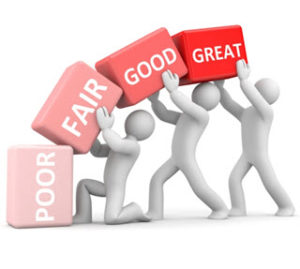There are essentially two types of Centrelink loans available and multiple options within these two…
Your Credit Score Made Easy – How It Works & Is Calculated
 We all know our credit score play an important role in our lives. Whether you are applying for a credit card, shopping for a home, or buying a new car, your credit score impacts whether a financial institution will give you the funds you are requesting. But understanding this three digit number isn’t always easy, especially since how they are calculated isn’t widely known.
We all know our credit score play an important role in our lives. Whether you are applying for a credit card, shopping for a home, or buying a new car, your credit score impacts whether a financial institution will give you the funds you are requesting. But understanding this three digit number isn’t always easy, especially since how they are calculated isn’t widely known.
To help you understand your credit score, including how it affects your ability to obtain new credit, here is an overview.
The Different Credit Scores
Some people are surprised to discover that you actually have more than one credit score. In most cases, when you think of your credit score, your mind goes to your FICO score as this is the one most frequently used in credit decisions. However, there are other scoring models, like the VantageScore, that can also be used.
Both FICO and VantageScore credit scores are three-digit numbers, but they use different scales and methods for completing the calculations. This means your score won’t be the same between the different models. The one thing they have in common is that the higher your score, the better your credit is considered to be.
How Credit Scores are Calculated
While the exact formulas involved are proprietary, shrouding the idiosyncrasies in a bit of mystery, the factors involved are known. In most cases, your credit score uses information like your payment history, the amount of credit available, the type of your current accounts, credit utilization, the average age of your open accounts, and the frequency at which you apply for new credit to determine the score.
Based on the weighted importance of the factors mentioned above, the credit bureau creates a score that they send to lenders who run your credit. It functions as a summary of your credit history and helps determine the amount of risk you pose to the lender.
In the case of FICO scores, your number will be somewhere between 300 and 850, with 300 representing the worst credit history possible and 850 being considered the pinnacle of excellent credit. Typically, anything above 720 is considered excellent by many lenders, making it fairly easy to secure new credit products.
Credit Scores, Risk, and Lending Decisions
Ultimately, financial institutions don’t want to provide funds to someone who isn’t likely to pay them back. Lower credit scores suggest you are a higher risk, or less likely to be able to repay the funds, than someone with a higher score.
When a lender assesses the risk, they first determine whether they are willing to open the account at all. In many situations, a financial institution has a minimum score that must be reached before they will go forward with considering providing the credit product. If you fall below that line, you typically will be turned down.
If your score meets the minimum requirements, then your score may determine other aspects of the produce you are offered. For example, a person with a lower credit score typically pays higher interest rates to compensate the lender for the increased risk. You may also be offered a lower credit line or be asked to provide collateral. People with higher scores get more favorable interest rates because there is a high likelihood the debts will be repaid, so the lender is assuming less risk by opening the account.
Credit Scores Change with Time
The most important thing to understand is that your credit score will change based on your actions. If you miss a payment on a loan or credit card, your score will decrease. If you reduce your credit utilization ratio, your score may go up.
By using credit responsibly, you can improve your score. So, make it a priority to pay any debts, limit your use of credit, and avoid opening unneeded accounts. Then, your good behavior can be rewarded with a higher score, making it easier to get the credit you need when it really counts.
Get Your Free Credit Report
If you are unsure of your credit score or are interested in reviewing your score, you can get a free report direct from one or 3 different agencies in Australia. Review options and how to get your free credit report via the OAIC.gov.au site.
Below are other great articles and resource in regards to credit.
– Repairing Your Credit History When You Have Bad Credit
– Understanding the New Credit Reporting Rules



Comments (0)